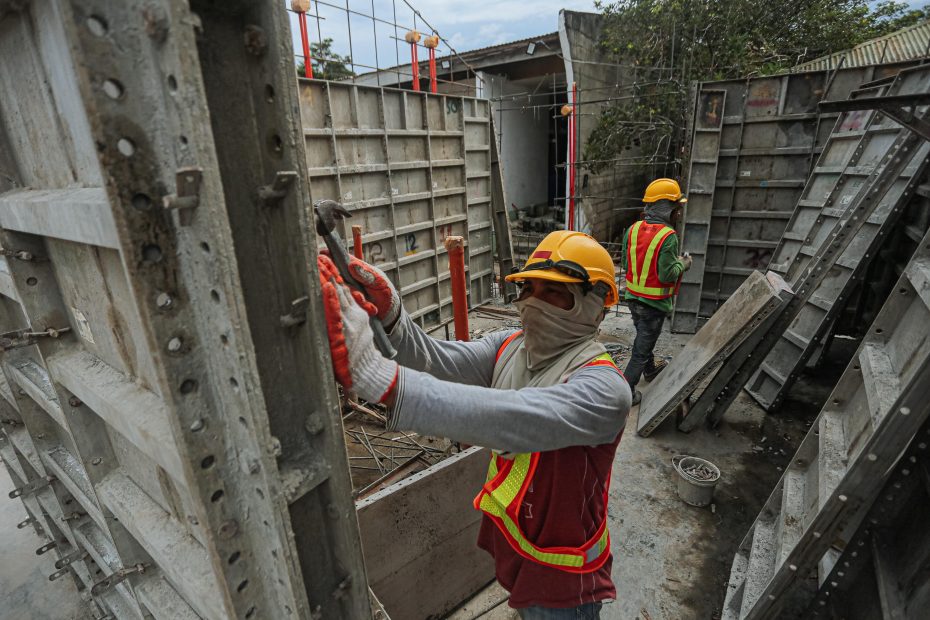To be able to finish a construction project in the Philippines, a team composed of a contractor, project manager, architects, engineers, foremen, lead men, carpenters, and laborers, among others, has to perform plenty of tasks that require collaboration with each other using their own expertise. Big part of the job is to communicate effectively, but the problem is that these people come from different backgrounds particularly in terms of education and language.
More or less, those who are in the project management level (engineers to project manager) would be able to discuss various portions of a certain construction project in their comfortable language, English, because this is what is usually taught in the classroom (especially for engineers).
But this is not the case for the skilled and unskilled workers: They are used to using technical construction terms in Tagalog (approx. 96% of the Filipino population speak this language), so there is a need for adjustment from the side of the project management in translating the names of this and that to meet halfway.
So what are the most commonly used construction terms when translated in Tagalog? See this list below, particularly useful for engineers who are just starting in the Philippine construction industry:
- Poste – Haligi
- Guililan – Girder
- Suleras – Joist
- Sahig, Suelo – Flooring
- Sepo – Girt
- Biga – Beam
- Barakilan – Bottom Chord
- Reostra – Purlin
- Senepa – Fascia Board
- Kostilyahe – Ceiling Joist
- Tabike – Siding (External)
- Pilarete – Stud (Vertical)
- Pabalagbag – Stud (Horizontal)
- Tansi – Nylon Used for Alignment
- Tambol – False wall
- Soleras – Joist
- Kilo – Truss
- Tahilan – Top Chord
- Sombrero – Window Head
- Muldora – Molding
- Plantsuwela – Wrought Iron Strap
- Rebokada – Scratch Coat
- Eskumbro – Earth Fill
- Cerrujo/Seruho – Wastage from Architectural Materials
- Kanto-Mesa – Miter Joint
- Rodelang Bakal – Metal Trowel
- Ampao / Ampaw – Honeycomb air pockets in concrete
- Anilyo – Rebar Ties
- Masilya – Putty/Filler
- Kamada – Piling of Materials
- Pasamano – Window Sill
- Sumbrero – Window Head
- Hamba – Window Jamb / Door Jamb
- Sinturon – Collar Plate
- Hardinera – Stringer (Open)
- Madre (De Escalera) – Stringer (Closed)
- Baytang – Tread
- Takip (Silipan) – Riser
- Gabay – Handrail
- Muldura – Moulding
- Sibe – Eave
- Bolada – Projection
- Balangkas – Frame Work
- Kanal – Gutter
- Alulod – Conductor
- Planchuela – W. I. Strap
- Pierno – Bolt
- Plancha – Scaffolding
- Estaka – Stake
- Kusturada – Plastered Course
- Palitada – Stucco Or Plaster
- Rebocada – Scratch Coat
- Piketa – Pickwork (On Masonry)
- Monyeka – Varnish Finish
- Biento – Spacing Of Gap
- Larga Masa – Concrete Slab (Rough)
- Asintada – Alignment
- Hulog – Plumb Line
- Baldosa – Cement Tile
- Ladrilyo – Cement Brick
- Batidora – Door Fillet
- Kanal – Groove
- Haspe – Good Grain
- Plantilya – Pattern / Schedule
- Bisagra – Hinge
- De Bandeha – Paneled Door
- Escombro – Earthfill
- Lastilyas – Masonry Fill
- Liyabe – Adobe Anchor
- Hinang – Solder
- Estanyo – Nicolite Bar / Soldering Lead
- Suban, Subuhal – Temper (Metal Work)
- Pie De Gallo – Diagonal Brace
- Punsol – Nail Setter
- Poleya – Wiring Knob
- Espolon – Cabinet Hinge
- Medya – Half, 0.5
- Porma – Formwork, usually Phenolic Plyboard
- Clebe – Drain Slope
Sources: Real Living | Ang Bahay
Top photo by Denniz Futalan via Pexels
